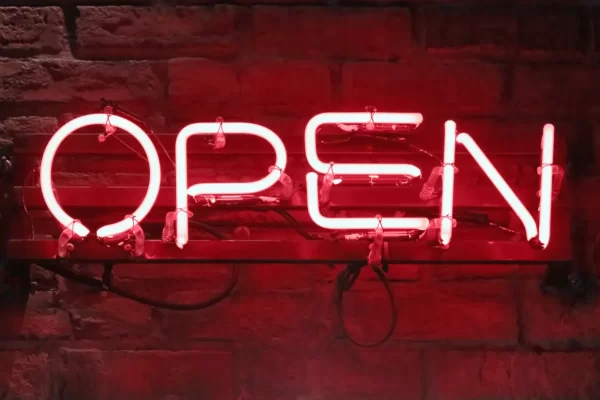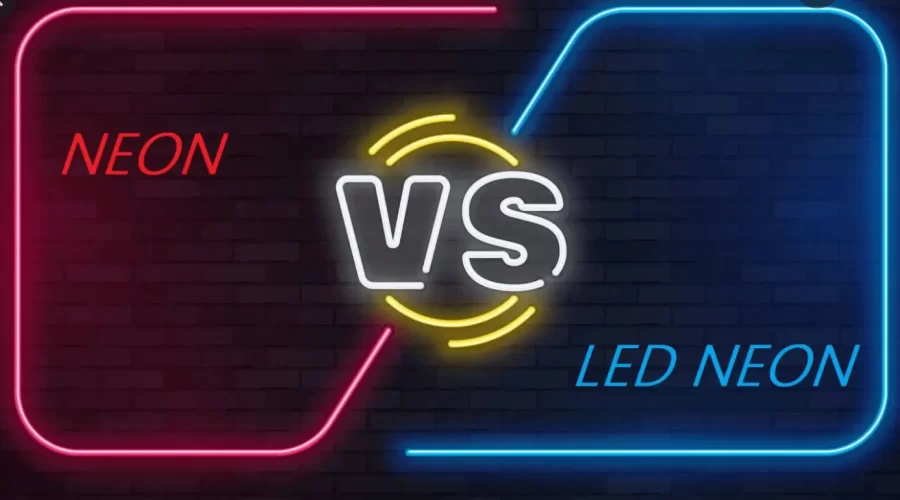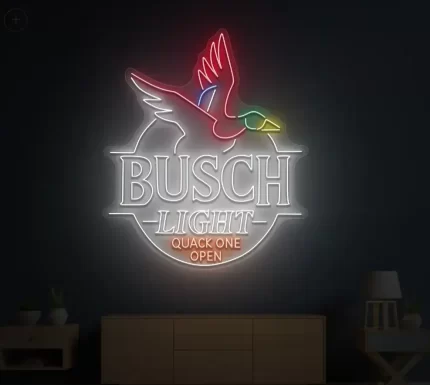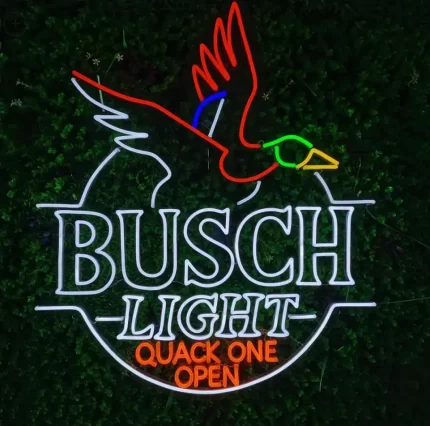Neon vs LED signs, they are both distinctive. Neon look signs, made from LED flex, are fast gaining in popularity.

However is an LED light that looks like a neon sign a better selection than a real glass neon sign? How do the LED neon differ from the traditional glass neon? Which is better neon or led. We’ve made a contrast in between led customneon vs glass neon for your fast referral.
What Are Neon Signs?
Neon signs are a type of light bulb that is exceptionally durable and efficient. It is almost similar to fluorescent light. They’re constructed of heated and curved long fluorescent gas-discharge tubes, in various types and lettering.


What Are LED Signs?
LED neon lights replicate the lighting effect of glass neon lights, but do so more efficiently. These lights feature a strip with different Light-emitting diodes or LEDs placed on it. The type, color, size, and also strength of these LEDs determines the color, brightness, and the tone of the neon light created.
What’s the Difference Between Neon Signs vs LED Signs?
Neon vs LED Signs - Materials and Components
A neon sign has the following major components:
- Tubes
- Electrodes
- Transformer
- Backing panel/framework
An LED neon sign has the following major components:
- Tubes
- Edges
- LED
- Backing panel
Neon vs LED Signs - How to Work
Neon signs emit light as the result of a chemical reaction between the gas inside the glass tube and the electricity fed in through the metal electrodes.
LED neon lights feature a cluster of LEDs placed on a strip. The LEDs are made with different kinds of materials and encased in a clear jacket so their light can shine bright.
Neon vs LED Signs - Price
The initial costs of neon and LED lights are almost similar, it depends on the size of the light display you are creating. For big, outdoor screen, LED works out around 10% cheaper than neon signs.
Neon vs LED Signs - Energy Efficiency
One of the benefits of LED neon is the cost savings it provides. Because it runs on a far lower voltage than traditional neon, it’s a lot more energy-efficient and costs around 20% less to run. Neon vs led power consumption is specifically true with larger signs as well as outside display screens.
Neon vs LED Signs - Maintenance
Neon signs are much more challenging to maintain, specifically in cooler environments where ice and snow are a problem. Furthermore, upkeep problems call for the attention of an experienced specialist, which may add to the cost.
LED neon signs require almost no maintenance, meaning you need not have to spend money on fixing or replacing components.
Neon vs LED Signs - Visibility
Neon signs are warmer and also evoke a feeling of nostalgia. However, they are dimmer than LED signs.
LED lights are brighter and can be seen from a greater range. LEDs can attract people like moths to a flame!
Neon vs LED Signs - Safety
Because neon signs use high voltage and genuine glass tubing, there is constantly the risk of shattering, requiring unique disposal procedures. And neon signage has a very small amount of mercury, which they use to generate the particular color of light.
LEDs are shockproof and generate extremely little heat, making them totally secure for use. LED signs is also free of harmful components like mercury and phosphor.
Neon vs LED Signs - Flexibility of Design
Once a neon sign has been manufactured and the fluorescent tubes have been filled with neon gas, there’s only one effect that the sign can achieve, which’s to radiance with a static single-color illumination.
LED lights come in a much wider range of colors and can be bent much more tightly, providing you better options as regards shape and designs of signage.
Neon vs LED Signs - Space Requirements
Both traditional neon signs and LED neon signs can be used indoors and outdoors without any problems, but small cafes or stores may prefer LED as it’s 1/4 to 1/3 thinner than the glass option. They’re also very lightweight and can simply be popped on the counter (with a stand), hung from somewhere or wall-mounted.

Glass Neon vs LED Neon Flex – Which is Better?
| Glass Neon | LED Neon Flex | The Winner | |
| Cost | Required their gases filled up every so often and maintaining at some point | Around 10% less expensive than neon signs and requires essentially little maintenance | LED Neon |
| Energy Efficiency | Input voltage of 3KV-18KV | Input voltage of 24V/120V | LED Neon |
| Color Varieties | Fewer colors available | Custom any color | LED Neon |
| Safety | Made of glass tubes and gases, breakable and leak out | Made of flame-resistant PVC material, shatter resistant, no gasses | LED Neon |
| Portability | Heavy, breakable, prone to damage during shipping | Lightweight, easily transportable, durable during shipping | LED Neon |
| Ease of Instalation | Expert glass neon designer required to install | Hang or wall mount like a painting | LED Neon |
Customers Who Have Compared LED Neon vs Neon






FAQ
- LED neon is a lot thinner, making it excellent for small cafes or brick and mortar storefronts.
- LED is a lot cheaper to manufacture. Neon vs led efficiency comparison, LED is more energy-efficient.
- LED comes in a broader range of colors, and giving you the freedom to create any word, sign, or logo you want.
- LED neon poses no risk.
Typically, glass neon would not have been considered for the room, not only due to safety concerns but also for lack of color choices and the inability to dim the light.
But LED neon options come in an abundance of warm colors to create an ambient glow in any area of your house. LED signs are probably a better option for indoor wall art because they’re lightweight and very easy to install or hang, no electrician is required.
No. LED lights are brighter and can be seen from a greater distance.
LED Neon signs are incredibly durable, and with a lifespan of about 100,000 hours.
Glass Neon Vs Led Neon Signs
led vs neon
neon vs led sign
led neon vs glass neon
neon lights vs led








